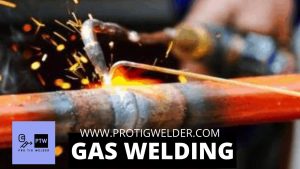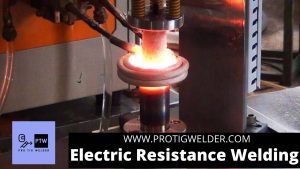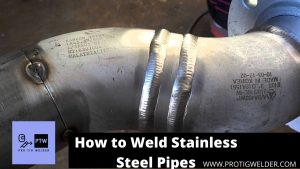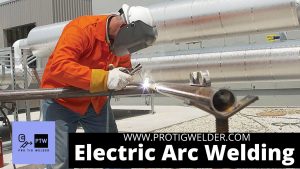Stainless steel is a type of metal that can be made hard by cold-working. The process of welding stainless steel is what gives it its name, as this joining method leaves no evidence on the surface of the weld. It’s also one of the most widely used methods for manufacturing pipes from stainless steel. This article will cover more about how to weld with stainless steel and some common mistakes you might make when doing so.
Welding Stainless Steel for Appliances and Cookware
Stainless steel is used in the manufacture of appliances, cookware, automotive parts, containers for food and beverages. Welding techniques can differ depending on factors like the material composition, design of the product and its intended use. What it basically comes down to is that there are two general methods for welding stainless steel:
Gas Welding
In gas welding, a shielding gas is used to protect the weld from oxidation and reduce the amount of smoke produced. The most common gases used for this process are argon and helium along with acetylene or propane. In order to create an inert atmosphere inside the weld
Non-consumable electrodes are generally preferred for welding stainless steel but consumables can also be used. Gas tungsten arc welding (GTAW) is an example of a process where consumable electrodes are used to join the metal pieces together. The electrode makes contact with the material at one point and melts, allowing it to become part of the weld puddle.
As far as equipment goes, you will need an inert gas container, a welding torch, the electrodes you plan to use and a regulator for controlling the flow of gas.
Electric Arc Welding
Stainless steel arc welding is accomplished using consumable or non-consumable electrodes in an electric arc that forms between two pieces of metal when an electrical current is passed through them. The electrodes are made of a metal alloy and can be either gas-shielded or self-shielded, depending on the welding process used: Tungsten Inert Gas (TIG) Welding
In this case, the consumable electrode is protected by an inert gas such as argon. This process requires complex equipment but it can be very effective. The angle at which the torch is held determines the shape of the weld bead and you will need to use filler metal in order to fill any gaps. Aluminum
Arc welding with aluminum is not advised because it can cause contamination due to its reactive properties when it comes into contact with oxygen during the welding process. Non-consumable electrodes are used in this case, but the welding arc needs to be contained within a specialized nozzle.
Electric Resistance Welding
For this process, you will need stainless steel sheets or plates and electrodes with an alloyed metal core (usually nickel or chromium). A
Electric flash welding is another method that can be used for joining stainless steel sheets or plates together. In this case, the electrodes are pressed against the pieces of metal to be joined and a high electrical current passes through them. This causes localized heating and pressure which allows the pieces to fuse together.
Pros and Cons of Welding Stainless Steel
The main advantage of welding stainless steel is that you will be able to join separate pieces together using a strong joint. Welding can also help you achieve certain shapes that would not be possible if the material was cast or forged.
If you plan on joining sheets of stainless steel, then arc welding is your best option. Resistance welding can also be used when dealing with thin pieces of stainless steel, but it won’t work very well for thicker ones since the heat generated in this case is not enough to fuse them together properly.
Another benefit of welding stainless steel is its cost-effectiveness; even though some forms of welding are more expensive than others (e.g. TIG), they are still less expensive than the traditional casting or forging processes.
However, there are a few disadvantages to consider when welding stainless steel: Processing stainless steel using arc welding can be difficult because it has an irregular melting point which makes it hard to control. It is also prone to producing hydrogen gas during the welding process.
You also need to take precautions when dealing with this metal because it is prone to corrosion in the presence of oxygen, sulfur, or hydrogen sulfide.
Advancements in Technology
Improved welding equipment has greatly improved weld quality in the last few years and more people are turning to arc and resistance welding for stainless steel. This metal is often used in the construction industry, as well as for creating kitchen appliances.
In addition to these welding techniques, you can also try friction stir welding if you plan on joining large stainless steel plates together or laser welding if you want a clean and precise cut.
The Future of Welding Stainless Steel
Stainless steel is becoming increasingly common in the construction industry because it is resistant to corrosion, thermal shock and high temperatures. Welding techniques will need to become more advanced as new types of stainless steel are developed.
How to Weld Stainless Steel Pipes
The stainless steel welding process is accomplished by the same methods used for welding other types of metals, but there are some differences. For instance, when welding with gas, the torch must be kept at a distance from the workpiece in order to avoid sucking up
Step 1 – Joint Preparation
For gas welding, clean and then grind down both surfaces of the joint to be welded using a diamond wheel grinder. Be sure that both pieces are perfectly flat and smooth, and that there is no gap between them. If the two pieces are not properly prepared, the weld will be weak and might fail when in use.
Step 2 – Welding Preparation
To prepare for the welding process, use an acetylene/oxygen combination torch to preheat both surfaces of the joint to be welded. This will help to prevent the formation of localized hot spots and prevent melting through the thin metal.
Step 3 – Welding
Begin welding by keeping the flame at a 45-degree angle and moving it slowly over each surface in order to avoid burning through or melting anything. Be sure that both pieces are melted evenly and never stop moving, even for an instant. If stopping occurs it can cause pitting, which will reduce the strength of the finished product.
Step 4 – Filler Wire Use
Stainless steel welding filler wire is usually larger in diameter than its carbon counterparts because of its higher tensile strengths. Be sure to use the appropriate grade of filler wire that matches the metal being welded to avoid contaminating it.
Step 5 – Cleaning and Finishing
After completing the welding process, clean the metal with an oxy-acetylene torch by moving it slowly over the surface while constantly changing its angle. This will allow for a smooth, even finish that does not need additional finishing work.
Step 6 – Inspection
Inspect the finished weld for any flaws, such as burning or melting through. If either issue is present, cut out the affected section and re-weld it. Also, inspect for cracks by looking at them carefully along their length both visually and with a magnifying glass. Finally, test its strength by squeezing
Welding Materials Used in the Process
The materials that are employed in welding stainless steel can be gas or electric welding. Gas welding is apt for small jobs such as joining pipes and thus is only used when joining pipes together. Electric arc welding, on the other hand, is a more widespread and the most popular type of stainless steel welding process.
Conclusion
Stainless steel welding is accomplished by the same methods used for welding other types of metals, but there are some differences. For instance, when working with gas, the torch must be kept at a distance from the workpiece in order to avoid sucking up molten metal. Likewise, when using electric arc welding, it may be necessary to use stainless steel electrodes in order to avoid contamination. In addition, with either welding method, the stainless steel filler wire used must match the grade of the metal being welded.



![What Is Shielded Metal Arc Welding (SMAW) | [Complete Guide] What Is Shielded Metal Arc Welding (SMAW)](https://protigwelder.com/wp-content/uploads/2022/01/What-Is-Shielded-Metal-Arc-Welding-SMAW-150x150.jpg)
![How to Weld Cast Iron? [Ultimate Guide] | PROTIGWELDER How to Weld Cast Iron](https://protigwelder.com/wp-content/uploads/2021/12/How-to-Weld-Cast-Iron-1-150x150.jpg)
![How to Weld with Flux Core | [Ultimate Guide by PROTIGWELDER] how to weld with flux core](https://protigwelder.com/wp-content/uploads/2022/01/how-to-weld-with-flux-core-1-150x150.jpg)
![What Is Friction Welding Process? | [Best Guide - PROTIGWELDER] What Is Friction Welding Process](https://protigwelder.com/wp-content/uploads/2022/01/What-Is-Friction-Welding-Process-150x150.jpg)

![Yeswelder MIG-205DS Reviews [2022] | PROTIGWELDER Yeswelder MIG-205DS Reviews](https://protigwelder.com/wp-content/uploads/2022/01/Yeswelder-MIG-205DS-Reviews-150x150.jpg)
![What is Spot welding? And How Does It works? [PROTIGWELDER] what is spot welding](https://protigwelder.com/wp-content/uploads/2022/01/what-is-spot-welding-1-150x150.jpg)
![How to Reduce Weld Spatter | [Ultimate Guide 2022] How to Reduce Weld Spatter](https://protigwelder.com/wp-content/uploads/2022/01/How-to-Reduce-Weld-Spatter-1-150x150.jpg)
